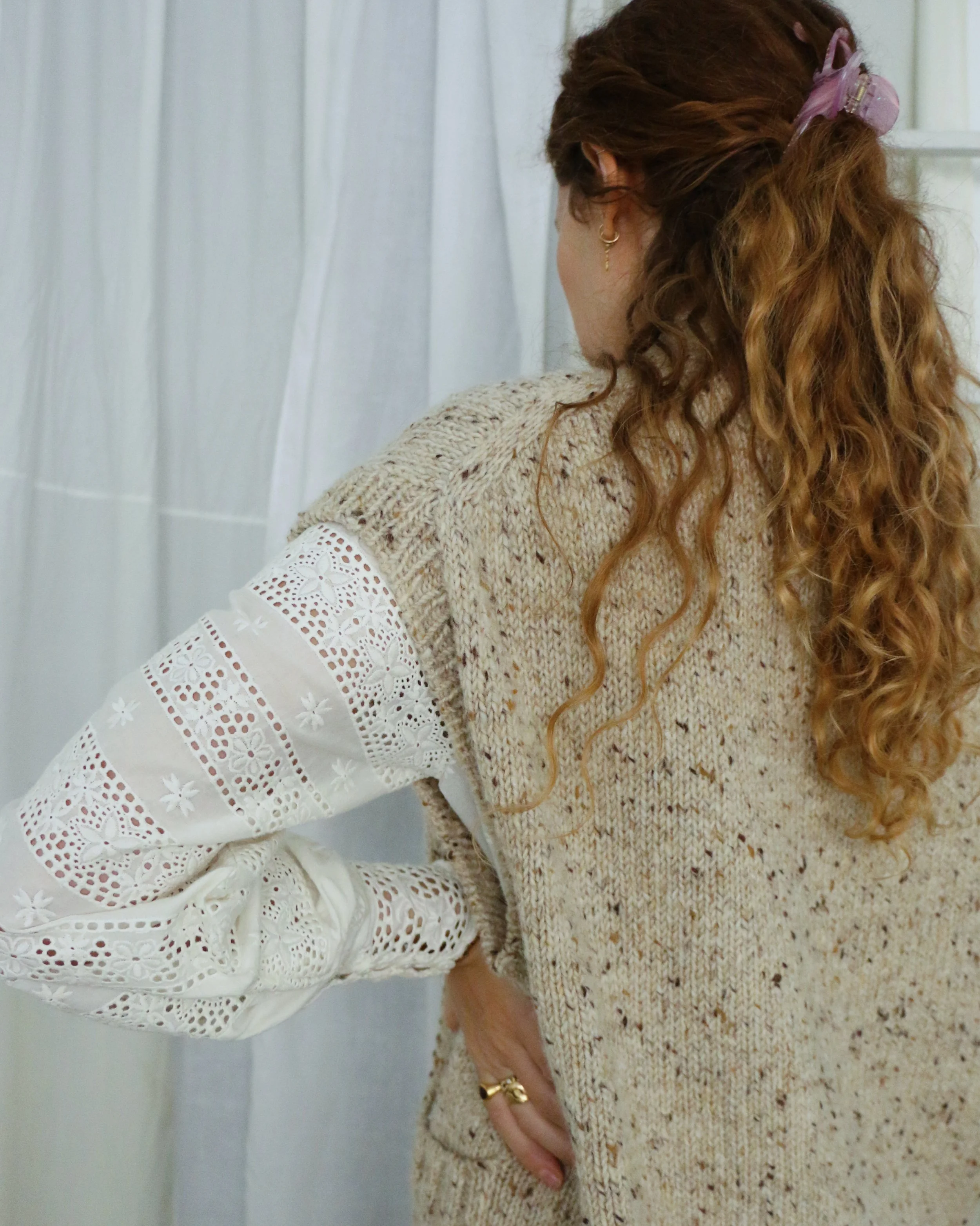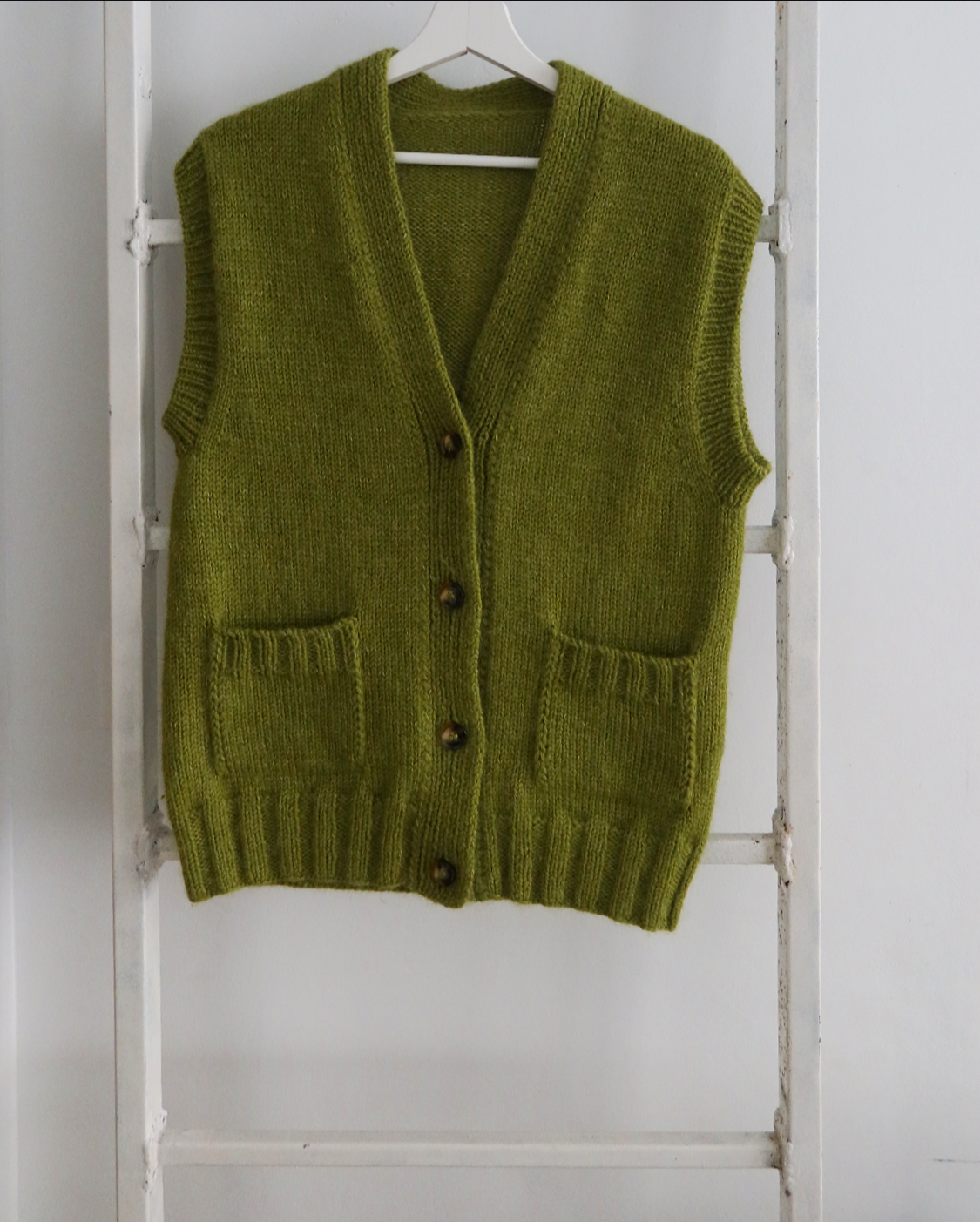VOLTAIRE VEST ENG
VOLTAIRE VEST ENG
ENGLISH
PDF download
Intermediate Level
The pattern includes reminders of the techniques and interactive links to tutorials on the website Trust the Mojo.
Language english
Level Intermediate
Construction
The Voltaire vest is knitted from the top down, in flat knitting without seams. You’ll start by knitting the back with 4.5 mm needles, working back and forth, making increases at the beginning and end of each row to form the dropped shoulders. The back is knitted until the bottom of the armholes, then the stitches are placed on hold to knit the front pieces.
Next, stitches are picked up along the increase rows of the back yoke, and the right shoulder and right front are knitted separately, followed by the left shoulder and left front, with increases that form the V-neckline. Once the shoulders and front pieces are knitted, the left shoulder, back, and right shoulder are joined to knit the lower body, finished with a 3x3 ribbing border using 4 mm needles and a classic bind-off.
The armhole rib edges are knitted in the round with 4 mm needles in 1x1 ribbing, and a tubular Italian bind-off. The applied button band is also knitted in 1x1 ribbing with 4.5 mm needles.
Finally, the patch pockets are knitted directly onto the work without seams, using 4.5 mm circular needles or double-pointed needles. The pocket edges are finished in 2x2 ribbing, with a variation of the Italian bind-off.
Level and content
The Voltaire vest is accessible but involves some technical finishing techniques requiring a bit of experience. The pattern provides detailed written instructions, along with links to video tutorials for more advanced techniques.
Fit and Sizes
The sizes XS (S) M (L) XL (2XL) 3XL (4XL) correspond to a chest circumference of approximately 80/85 (85/90) 90/95 (95/108) 108/120 (120/130) 130/140 (140/150) cm, with a positive ease of about 20 to 25 cm, depending on the size. To choose your size, measure your chest circumference and select the version that suits your desired fit. Try the garment as you knit it to adjust for your preferences and body shape.
Techniques
cast on - knit & purl - increase - decrease - slip stitch - picking up stitches - cast off - buttonholes => techniques can be found on Youtube and on www.trustthemojo.com
Matériel
• Option 1: 450 (450) 500 (500) 600 (600) 650 (700) g of Isager Yarn « Aran Tweed » - 100 g/160 m (sand)
• Option 2: 400 (400) 450 (450) 500 (550) 550 (600) g of Sandness Garn « Peer Gynt Tweed » - 50 g/91 m (9564) held together with 100 (100) 100 (100) 125 (125) 125 (125) g of Filcolana « Tilia » - 25 g/210 m (326)
• A pair of 4,5 mm circular needles with a long cable (at least 80 or 100 cm)
• A pair of 4 mm circular needles with a long cable (at least 80 or 100 cm)
• 4 buttons 18 or 20 mm
• Removable stitch markers
• 1 tapestry needle, scissors, pins and a flat surface to block your knitting
Sample
17 stitches x 24 rows = 10 x 10 cm with 4.5 mm needles in stockinette stitch.






